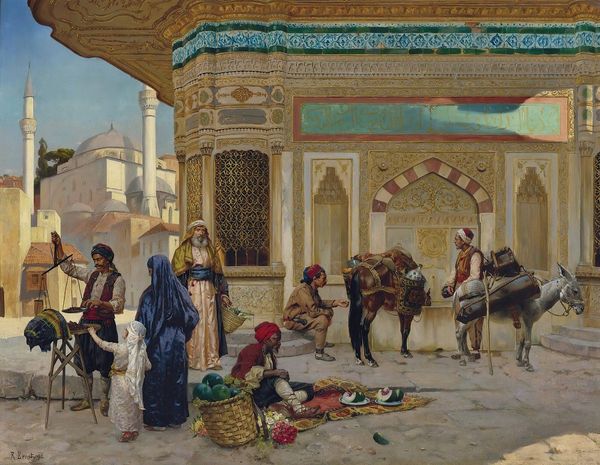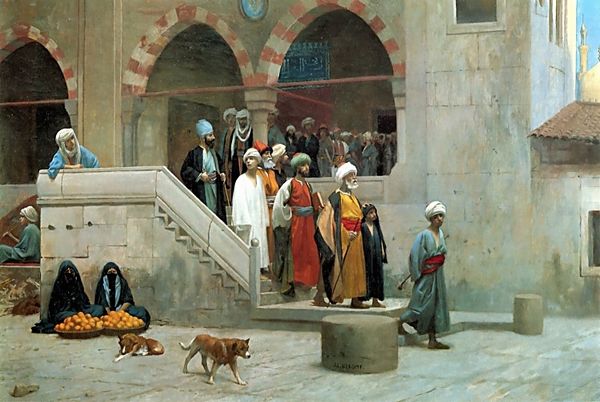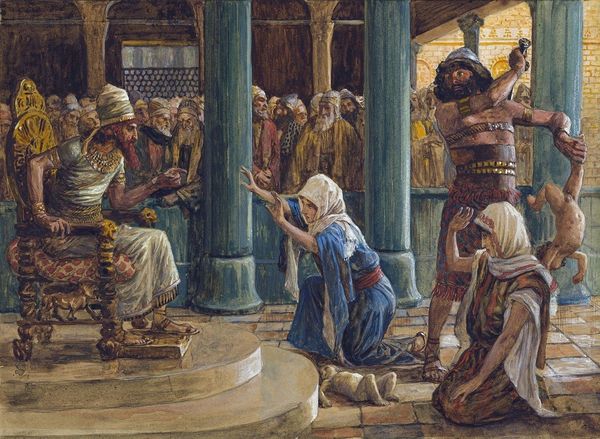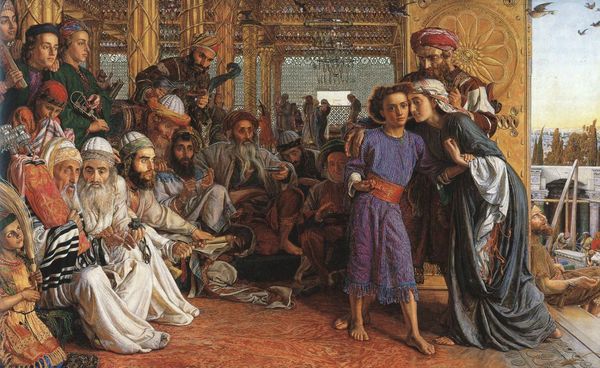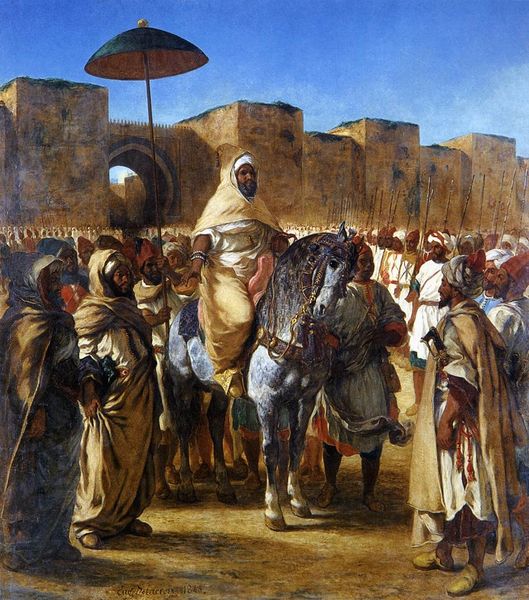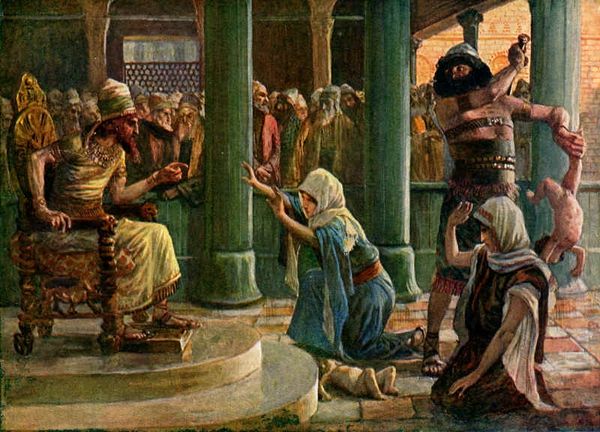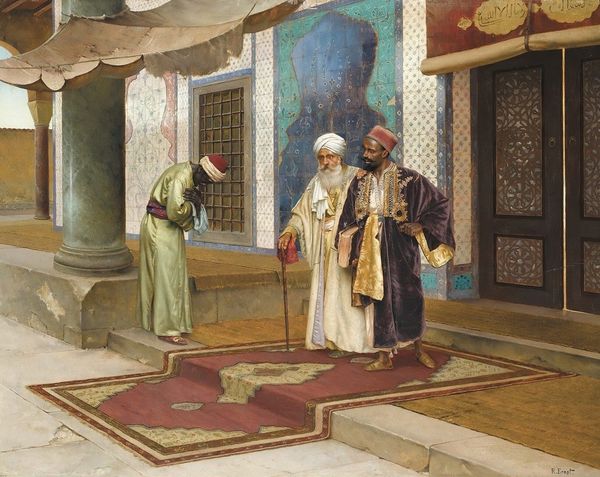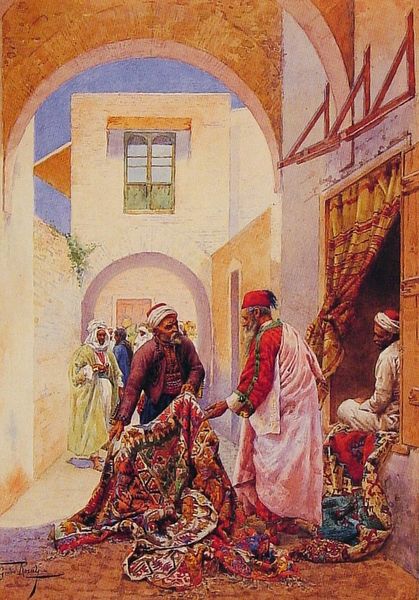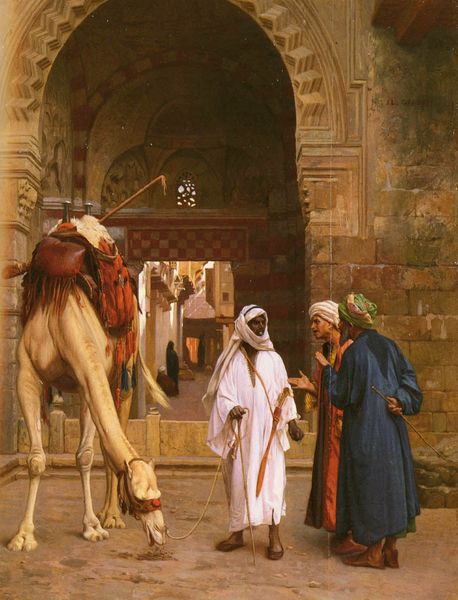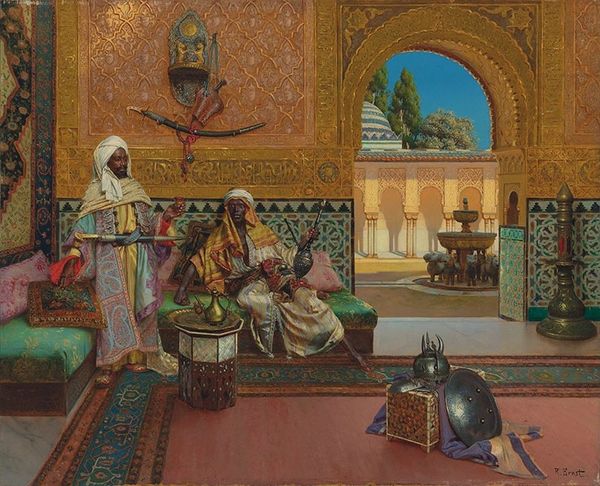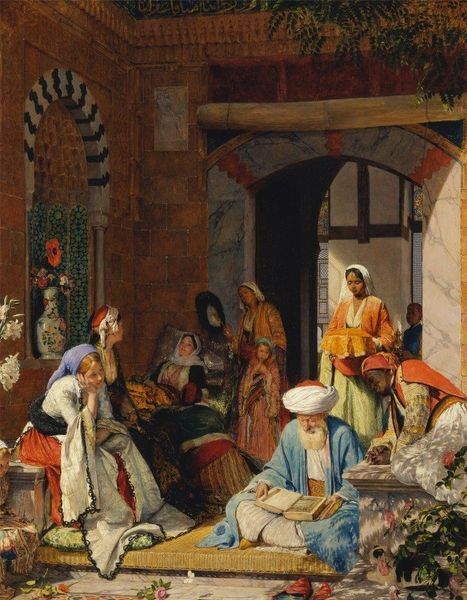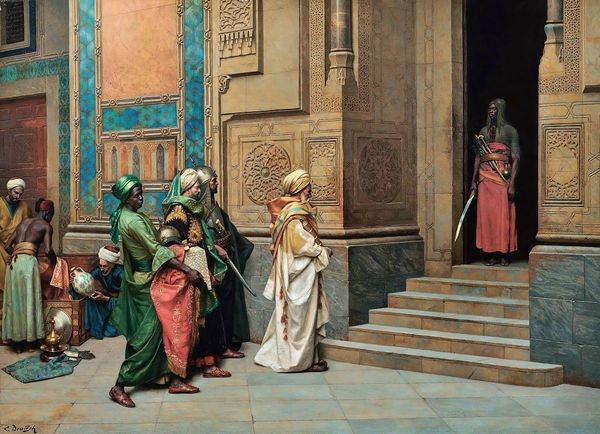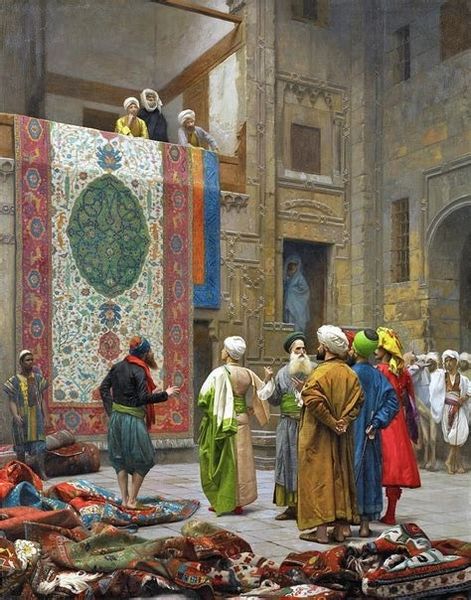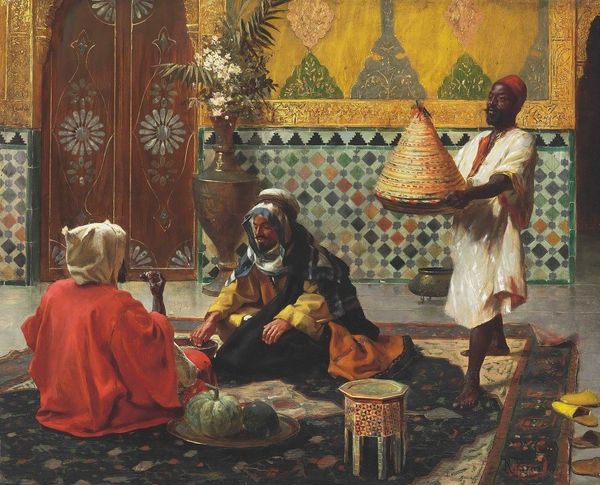
painting, oil-paint
#
portrait
#
narrative-art
#
painting
#
oil-paint
#
oil painting
#
orientalism
#
genre-painting
#
academic-art
#
watercolor
Copyright: Public Domain: Artvee
Curator: Welcome! We are standing before a painting by Rudolf Ernst, titled "The New Bride." Editor: It strikes me as a very carefully staged scene, almost theatrical. The composition is quite rigid, with a strong emphasis on geometric forms, especially with all those sharp architectural edges and lines. Curator: Ernst, a prominent Orientalist painter, often depicted scenes of daily life in the Middle East and North Africa. This particular piece gives us insight into how marriage rituals were perceived, if not practiced. It reflects a Western fascination with, and perhaps romanticized view of, these cultures. The canvas serves as a stage where this ritual plays out for a European audience. Editor: Absolutely. The details are meticulously rendered, aren't they? Notice how the texture of the stone walls contrasts with the smoothness of the fabrics. And those colors, the earthy tones against the jewel-like greens and reds – it's quite a feast for the eyes. The layering of details demands a prolonged and active spectatorship, rewarding those that linger to view it. Curator: The painting invites discourse around ethnographic representation. The scene presented speaks more of the fantasies that colonizers imagined for their colonial subjects and not of any factual basis of lived experience, offering a distorted view of marriage and Islamic cultures. Editor: Maybe, but those shimmering textures and geometric patterns really speak to the opulence, real or imagined. The careful attention to form—lines, colors, shapes—create a sort of harmony that exists separate from historical intent or even accuracy. I am particularly drawn to the figures closest to the awning structure with their bright fabrics. They stand in stark contrast to the more earth toned buildings. Curator: What fascinates me most is considering the viewer it was crafted for: a Western audience hungry for exotic and safe visions of "the Orient," reinforcing existing power structures through aesthetic consumption. Editor: It is difficult to consider these ideas apart from one another as it asks viewers to contend with beauty and power. This reminds us how technique and representation can sometimes entangle rather than elucidate history.
Comments
No comments
Be the first to comment and join the conversation on the ultimate creative platform.
